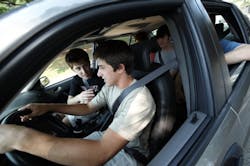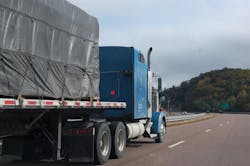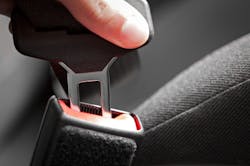Big blind spots detected in teenage driver knowledge
They should also know that, according to some studies, up to 90% of vehicle crashes overall are caused by driver error – which is another reason why many feel wide use of telematics data can help improve highway safety.
Yet here’s a growing trouble spot where those statistics intersect: a lack of driving knowledge on the part of teenagers, the group most prevalent to make mistakes when behind the wheel.
The results from a recent survey of 2,000 high school students nationwide conducted by the Foundation for Advancing Alcohol Responsibility (FAAR) laid this out in fairly grim fashion earlier this week. To wit, the group found that teenagers had trouble with the following common driving scenarios:
- 67% did not understand how to safely navigate a complicated driving situation.
- 60% did not know what to do when a speeding car approached them from behind.
- 35% did not know what to do when an emergency vehicle approached at a red light.
“Driver inexperience combined with developing brains that are hard-wired for risk-taking in the teenage years means that teen drivers are at high risk for crashes," noted Jonathan Adkins, executive director of the Governors Highway Safety Association (GHSA).
"More than half of the students we surveyed did not receive a passing grade on our IKnowEverything Challenge," said Ralph Blackman, FAAR president and CEO. "Teen driver safety is much more than simply knowing the rules of the road. It takes a lot of parental instruction plus hours of driving experience before novice teen drivers are fully prepared to drive."
On the plus side, though, FAAR’s survey did uncover some positive “knowledge pools” among teenagers in regards to vehicle operation:
- 91% know to fasten their seat belt and tell others to buckle up.
- Almost 90% can correctly identify distracted driving behaviors.
- 86% know how to drive safely when using a GPS.
"There are important tips teens can follow as they learn to drive and we’re making it a priority to improve teen driving safety laws in the states," she added
Still, Jim Graham, manager of Ford Motor Co.’s Ford Driving Skills for Life program, stressed that over his organization’s past 10 years of experience with young drivers, teenagers in general lack experience in key advanced driving skill areas such as vehicle handling, hazard recognition, and speed and space management.
“Furthermore, the issues of distracted and impaired driving are a real concern for teens and adults alike,” he stressed, noting some of the following stats:
- 25% of teens say they do not know how to handle a passenger who is drinking in their car.
- 27% do not know how to safely get home when their driver has been drinking alcohol.
- 38% are not sure how to handle a friend distracting them while driving.
Truck drivers, of course, can serve as ambassadors for “safe driving practices” wherever they go in the community – something drivers selected for the American Trucking Associations (ATA) Road Team program do quite well.
Out on the road, though, going 70 mph down a crowded highway there just isn’t time to instruct teen drivers in how to handle a dicey situation. Thus let’s hope we can fill in some of their knowledge “blind spots” quickly and completely.



